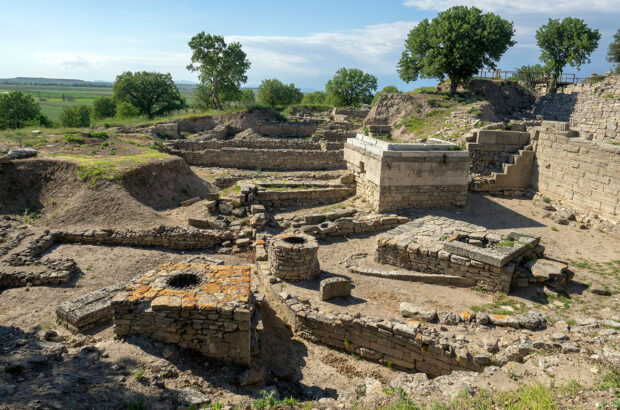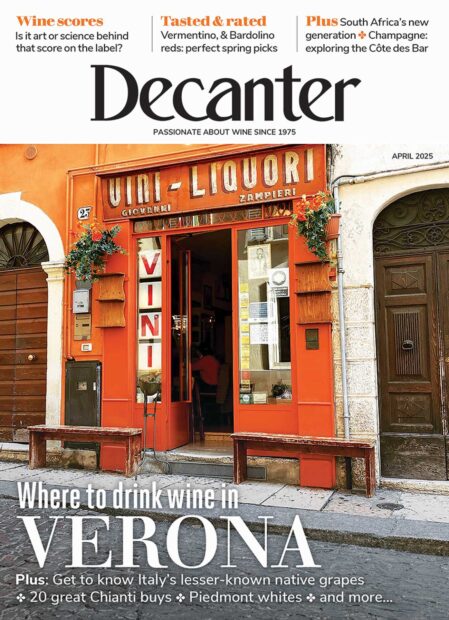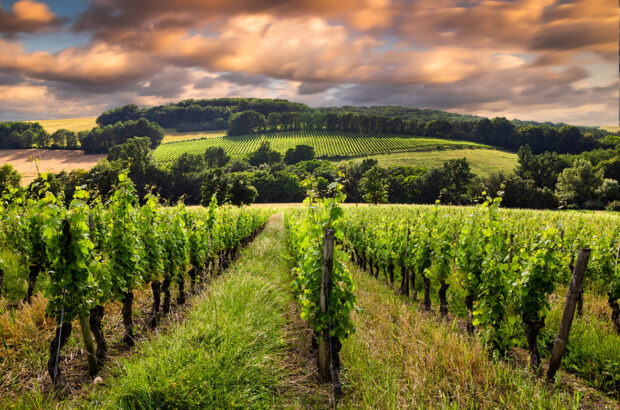'Natural' has become the latest buzzword in wine, but what does it mean and, more importantly, what does it taste like? Isabelle Legeron MW talks you through it.
Originally published 26 August 2011.
If you keep abreast of wine developments in the press, you’ll have noticed the latest trend polarising opinion in the wine world: natural wines.
How to understand natural wines
In 2011, London importer Liberty Wines emblazoned the first page of its trade list with the words ‘you won’t find any of the so-called natural wines on our list’.
I asked David Gleave MW, Liberty’s managing director, why he had felt compelled to write this. According to him, ‘It is important to me that a wine expresses the character of the grape and the place in which it is grown. Almost all of the natural wines that I have tasted have this expression marred by one fault or another.’
Gleave is not alone in his reservations. Critic Tim Atkin MW recently wrote in his blog, ‘natural wine lovers do seem to be indulgent of faults… that have nothing to do with good winemaking or terroir.’
So what exactly is natural wine? Where did it come from, why does it elicit such strong reactions and is it a passing fad or does it really have a future?
Today the natural wine scene is exploding. According to Sylvie Augereau, a wine journalist and author of the natural wine guide book Carnet de Vigne, there are about 400 natural wine producers in France alone, ‘and if you include those who make the odd cuvée, perhaps double that number’.
Natural wine fairs are now two-a-penny: France and Italy have a handful, and the UK this year got one of its own, The Natural Wine fair, which I co-founded.
There are natural wine producers as far afield as the US and New Zealand, as well as in lesser-known regions such as Slovenia, Georgia and Serbia. Paris, New York, San Francisco and Tokyo are mad about the movement and London is now close on their heels.
Given current media hype, natural wine might seem like the new kid on the block and, in the sense of a movement gathering momentum, that’s true.
Natural wines themselves, however, have existed since time immemorial. When wine was first made 8,000 years ago, it was not made using packets of yeasts, vitamins, enzymes, Mega Purple, reverse osmosis, cryoextraction or powdered tannins – some of the many additives and processes used in winemaking worldwide.
The wines of these bygone days were natural: they were made from crushed grapes that fermented into wine.
The natural wine movement
The natural wine movement, however, is a relatively new phenomenon. There is no single individual to whom the movement is attributable; instead, dozens of people contributed to the consciousness that ballooned as winemaking and viticulture became increasingly industrialised.
Among the earliest visionaries were agriculturalists such as Austria’s Rudolph Steiner and Japan’s Masanobu fukuoka, and wine gurus like Burgundy’s Jules Chauvet.
They were followed more recently in the 1970s and ’80s by producers Favard (Bordeaux), Gravner (friuli), Joly (Loire), Lapierre (Beaujolais), Laughton (Australia), Maule (Veneto) and Overnoy (Jura), to name a few.
Each turned their backs on conventional agriculture. Their philosophies inspired others, causing ripples of interest in their respective ponds. Soon other growers followed suit. The natural wine web was born.
Though a worldwide phenomenon, most winemakers advocating a return to the vineyard (away from the processing and manipulation of technology) are located in the ‘Old World’ hubs of France and Italy.
This, to biodynamics consultant Monty Waldin, who has made wine in both Europe and the New World, is hardly surprising. ‘New World wines succeeded on the back of technology – specifically long, cool, temperature-controlled fermentations, often in huge metal tanks for fruit-driven wines… natural winemaking is the complete opposite.
‘New World wineries were technology-driven from the word go,’ adds Waldin, ‘because they lacked experience, and strategies revolved around intervention in the vineyard and winery to eliminate risk.’
This is key. The importance of history and tradition in Old World wine heritage is in the fact that it emerged before the days of advanced technology – vineyards had to solve problems using natural know-how, as neither machinery nor additives had even been invented.
‘We have lost perspective’
While advancements in technology and winemaking science mean we now understand wine in a way in which our ancestors might not have, we do seem to have lost perspective.
Rather than use science to produce wines with as little intervention as possible, we use it to gain absolute control over every step of the process – from growing the grapes to making the wine itself. Very little is left to nature. This is this key factor that sets natural growers apart from all the rest.
Natural growers make a panoply of wines, but all share a similar outlook: nurturing biodiversity while embracing and observing nature, rather than fighting to control it. ‘Vines grown for the long term on a soil with a healthy and diverse microbiology will have a more balanced life and will be able, when necessary, to rely on their own immune system to fight off disease,’ says Jean-Pierre Amoreau of Château Le Puy in Côtes de Francs, which has been organic since its beginnings 400 years ago.
So how then does natural wine differ from ‘organic’ or ‘biodynamic’ bottlings? According to Alexandre Bain, Pouilly-Fumé’s only natural wine producer, ‘organic and biodynamic are the tools, natural is the philosophy.’
However, in Europe today these tools essentially govern practices in the vineyard rather than the winery. By contrast, natural wines extend this philosophy into the cellar, and are far stricter about what is and isn’t permitted.
Low intervention in the cellar
They are all about low intervention in the cellar. There is, for example, no rectification of sugars or acidity, no addition of yeasts and no removal of excess dilution in a wet vintage. They are as nature intended: a frank representation of a piece of land in a particular year.
As regulations stand, organic and biodynamic accreditation bodies are primarily concerned with regulating the use of synthetic chemicals in the vineyard, rather than additives in the winery.
For example, the UK branch of biodynamic-certifying body Demeter allows commercial yeast strains to be added to wines to kick-start fermentation.
This is a definite no-no in natural wine circles. Instead, all the components necessary to start and complete fermentation and give balance and complexity to a wine must come from the vineyard itself.
As Nicolas Joly from La Coulée de Serrant puts it ‘to achieve zero technology in the cellar, you need to be an artist in the vineyard’.
The only additive used by some natural wine growers is the controversial SO2. Under EU law, maximum total sulphite levels permitted in a bottle of wine are 150mg/litre, 200mg/l and 400mg/l for red, dry white and sweet wines respectively.
Organic and biodynamic certifying bodies are a little more stringent, but natural wine is the strictest of all, with most producers averaging under 30mg/l for reds, 40mg/l for whites and 80mg/l for sweet wines (according to the Association des Vins Naturels). Some growers use none at all.
This lack of additives is claimed by natural wine proponents to be a boon for wine drinkers, as anecdotal evidence suggests that natural wines induce fewer side effects than their conventional counterparts.
I’ve met people who have rediscovered wine thanks to additive-free bottles. What’s more, Roger Corder, professor of experimental therapeutics at the William Harvey Research Institute at Barts Medical School in London, is concerned by some additives used in wine. Because of a lack of research, ‘we have no idea about the consequences of some of these on our health.’
Detractors say that natural is often an excuse for poor winemaking. But then, what is the definition of a ‘fault’? Paul Old from Les Clos Perdus, a natural wine producer in the Languedoc, says ‘making great wine is to flirt with fault’.
I second that. But the issue of where the fault/quality line lies seems to confuse the debate. Cloudy or not cloudy; oxidative or not oxidative… these traits are not requirements of a wine’s being natural.
There are natural wines that exhibit these characters and there are many that don’t. Honing in on specifics in this way is unhelpful since drinkers often (incorrectly) apply such judgments to the category as a whole, which is a shame – even the most ardent critics still find natural wines that they love.
I am a total convert and drink nothing else. Fine natural wines are vibrant and alive, and show excitingly diverse personalities that are full of emotion.
How to prove it
So if they taste great, are environmentally sound and may even be healthier than conventional wine, why the controversy?
The main issue is accreditation. There is none. As Jem Gardener of Vinceremos, a specialist organic wine shop in Leeds, points out, ‘we are expected to take it on trust… that they are using natural methods and ingredients. I’d love this to be sufficient, but I fear in this world it isn’t’.
Any grower can call himself natural. Whether or not he is comes down to his own integrity. Natural wine associations in Europe are attempting to rectify the situation with quality charters, and are working towards a common definition.
Accreditation would certainly help natural wine be taken more seriously.
Wine is one of the few food industries not regulated by labelling laws. As we become increasingly aware of what we eat, it seems bizarre that we are not yet asking the same questions of what we drink.
We celebrate unpasteurised, stinky Epoisses for its uniqueness, and fresh apple juice for its cloudiness, yet we insist on wine that is sterile and consistent, regardless of how it was grown or made.
It seems to me that we are asking the wrong questions. Rather than focusing on particular flavour profiles, let’s ask how much manipulation is justified and at what cost?
When you taste wines by the likes of Le Casot des Mailloles in Banyuls or Domaine de Fontedicto in the Languedoc, which both make beautiful examples with no additives at all, it does make you wonder: if they can manage it, why can’t everyone else?
Natural wines have blown open the debate about wine’s authenticity and transparency; that alone is cause for celebration.
Written by Isabelle Legeron MW. Page updated on 15 February 2016.







